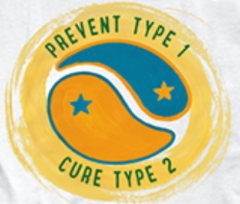Many people wonder, is type 1 diabetes genetic, and is type 2 diabetes genetic? The common types of diabetes tend to run in families. However, neither type 1 diabetes (thin diabetes) nor type 2 diabetes (fat diabetes) is truly a genetic disease. It is possible for one member of a pair of identical twins to have thin or fat diabetes, while the other twin remains healthy. It is even possible for a person with fat diabetes to recover from their diabetes, by losing weight. Nevertheless, there are a few rare forms of diabetes that truly are genetic diseases. These conditions are sometimes called monogenic diabetes because they result from a mutation in a single gene.
By the 1970s, it was clear that some cases of diabetes did not fit neatly into either of the main types of diabetes mellitus. In particular, there were some cases that were relatively mild (like type 2 diabetes) but occurred in young, thin children (like type 1 diabetes). In these cases, the doctors suspected that they had spotted an early case of type 1 diabetes, but the problem never seemed to progress. Eventually, doctors realized that this problem ran in families. This condition was eventually called maturity-onset diabetes of the young (MODY). Several forms of MODY have been identified. Each is associated with one particular gene mutation. MODY is an autosomal dominant trait. You need only one copy of the defective gene in order to have the problem.

Cases of MODY tend to be mild. In many cases, the person seems healthy. The only evidence of disease may be a high blood sugar reading during routine bloodwork. Many cases are discovered only after relatives of someone with a diagnosed case of MODY go in for testing. The treatment for MODY varies, depending on the particular gene mutation involved. Many cases can be managed with a high-carbohydrate diet, which improves the body’s sensitivity to insulin. Some patients may benefit from pills that cause the pancreas to release more insulin. Some patients eventually need supplemental insulin.
There are also some severe forms of diabetes mellitus that look like thin diabetes (type 1 diabetes mellitus) but are occurring in infants. These disorders are called neonatal or infantile diabetes. They generally result from an autosomal recessive gene, which means that you have to inherit a defective gene from both parents to get the disease. Infantile diabetes is treated with insulin replacement, like thin diabetes. However, the babies sometimes outgrow the problem.

If you think that you or someone in your family has a genetic form of diabetes, contact the Monogenic Diabetes Registry at the Kovler Diabetes Center at the University of Chicago Medical Center.

